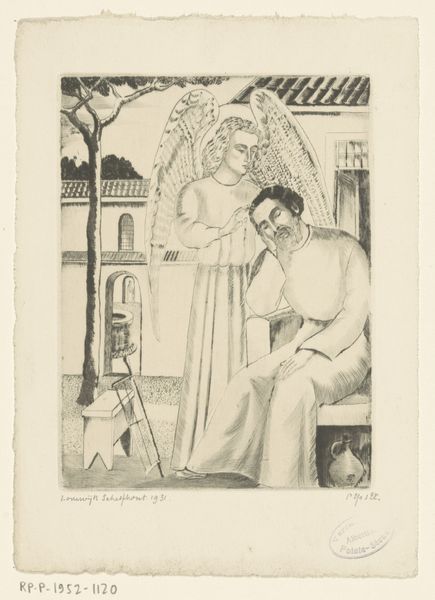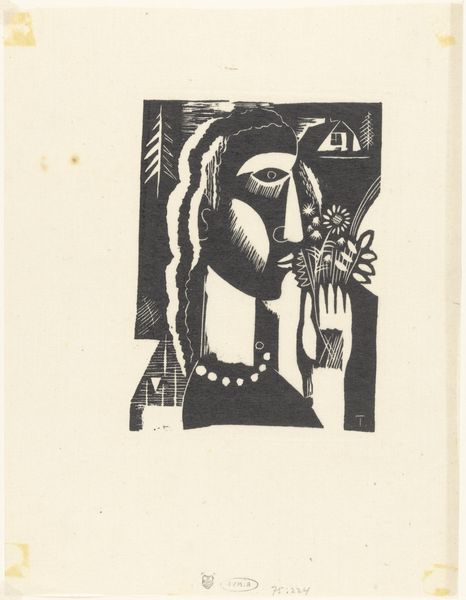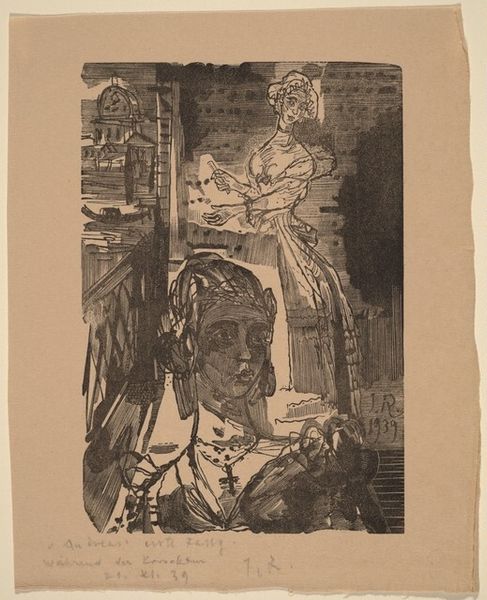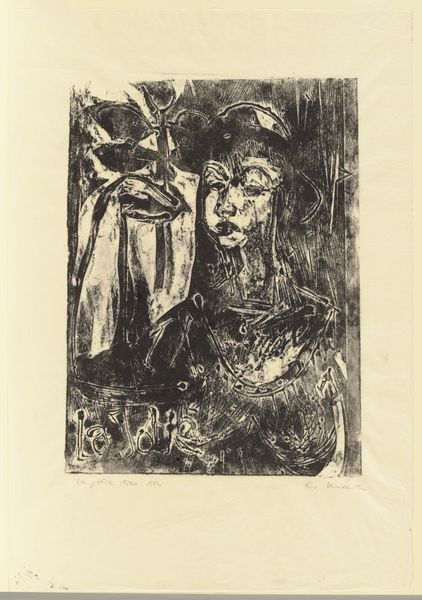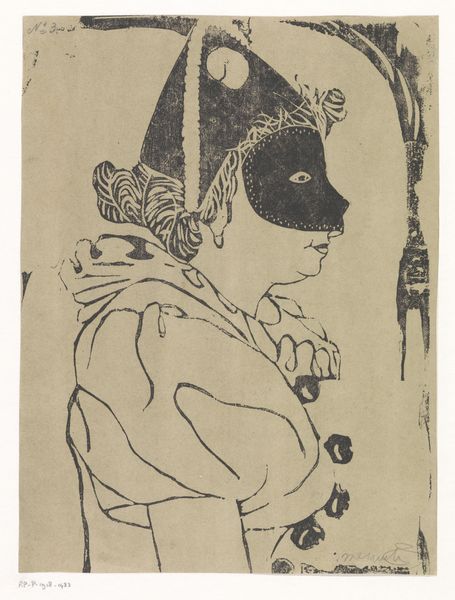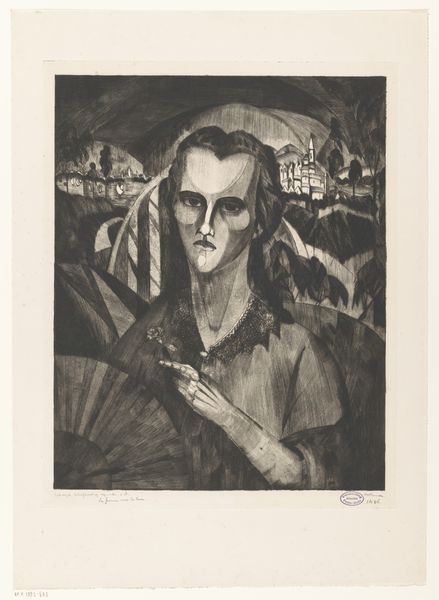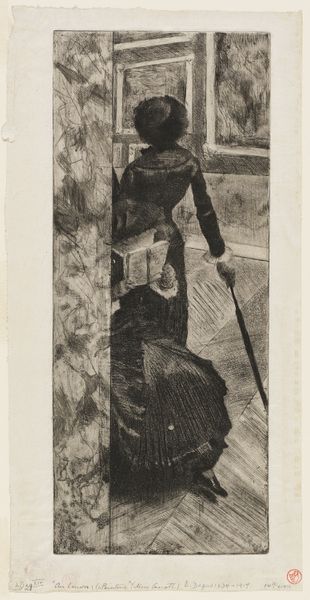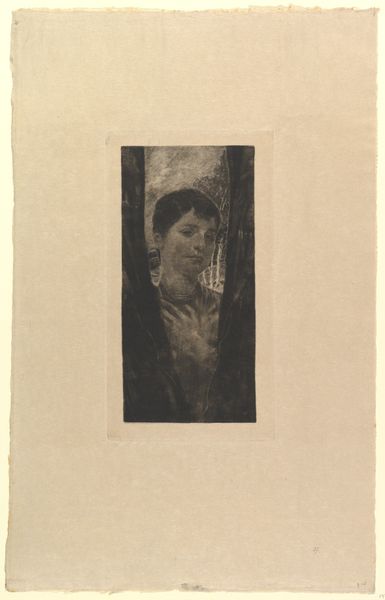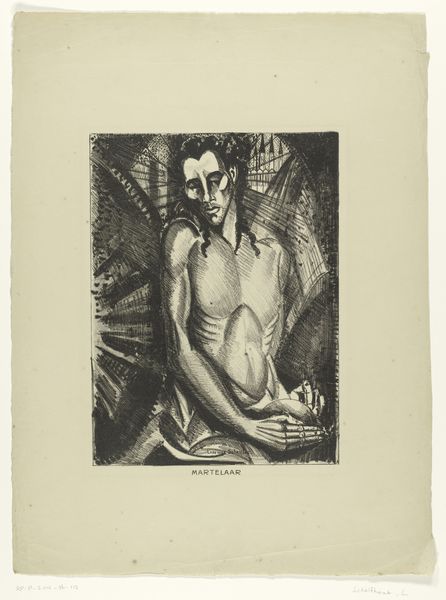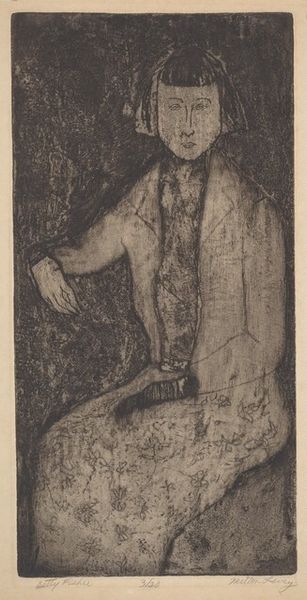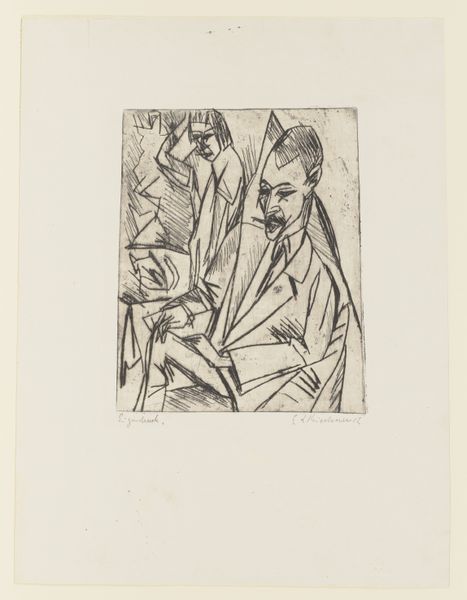
print, etching
#
portrait
# print
#
etching
#
figuration
#
expressionism
#
symbolism
#
the-seven-and-five-society
Dimensions: height 297 mm, width 200 mm
Copyright: Rijks Museum: Open Domain
Curator: Ah, yes. Here we have Lodewijk Schelfhout’s "Pierrot II", created in 1918. It’s an etching, currently held in the Rijksmuseum. It's interesting to see how Schelfhout explored symbolism within an expressionistic style. Editor: Immediately, the Pierrot's eyes draw me in; they're closed in an almost melancholic reflection. The print itself has this incredibly intimate feel, like stumbling upon a private moment of the soul laid bare. Curator: Pierrot is a very old archetype, emerging from the commedia dell’arte tradition. His white costume, the ruff, these elements carry a heavy history of the outsider, the melancholic clown always yearning for the moon, often a symbol for inaccessible desires and unattainable ideals. Editor: Exactly! And Schelfhout's composition deepens this. The darkness pressing in from the sides, that distant cityscape, even what seems to be a ghostly organ floating behind him - it suggests an oppressive world, echoing Pierrot's own internal struggles. I imagine, making prints, there is the physical act of inking, wiping, pressing – like an effort to unearth something. Curator: He was affiliated with the Seven and Five Society, an art movement which focused on simplifying forms to their essence, and in this work, Pierrot feels simplified to these raw emotional core. Notice how the moon in the left, and that suggestion of musical bars on the other could imply longing for solace, or a connection to something transcendent perhaps. Editor: Solace, perhaps, or just the vast, indifferent universe staring back! It feels both deeply personal, and universal, that sense of being both absurd and utterly alone which, well, many artists would likely share, then, now, ever! The flower in Pierrot's hand feels frail; like an offering or a captured, fleeting emotion about to fade. Curator: Yes, indeed. Schelfhout uses Pierrot not just as a character, but as a mirror, reflecting back the complexities of the human condition itself through universal symbols that traverse the centuries. Editor: So much pathos wrapped in stark lines. Well, now I feel like needing to seek the most theatrical black and white film and revel in melancholic beauty all evening. Thanks, Lodewijk! Curator: A beautifully apt summation. An artwork that invites, indeed, sustained and felt reflection.
Comments
No comments
Be the first to comment and join the conversation on the ultimate creative platform.
